-
There seems to be an uptick in Political comments in recent months. Those of us who are long time members of the site know that Political and Religious content has been banned for years. Nothing has changed. Please leave all political and religious comments out of the forums.
If you recently joined the forums you were not presented with this restriction in the terms of service. This was due to a conversion error when we went from vBulletin to Xenforo. We have updated our terms of service to reflect these corrections.
Please note any post refering to a politician will be considered political even if it is intended to be humor. Our experience is these topics have a way of dividing the forums and causing deep resentment among members. It is a poison to the community. We appreciate compliance with the rules.
The Staff of SOH
You should upgrade or use an alternative browser.
Around the world in 175 days.
- Thread starter blanston12
- Start date
I flew around the World just this last Winter in a Diamond DA-42 (Alabeo).
It was wonderful - the PC was blowing cold air and for some of the time I actually had to wear my yachting oilies to keep warm - "As real as it gets"!
It was a great trip. I flew 3-6 hours a day and I kept a paper log and I'll always remember it as an accomplishment worth doing.
p.s: Watch out for India - textures are very repetitive!
Here's my route:

Here's the beautiful aircraft I did it in: Dear Old: "Papa Hotel - Lima Uniform Echo" - my favourite Aeroplane. She and I have flown around the World together and the trust is there. Blindfold me...and I'll fly her by feel and sound. When MIL COMBAT gets jaded I know it's high time to pull this airframe out of the hangar and start her up. On TO she yaws like a broken jib in a storm, and when you bring her in for a short final she flaps about like a glider but she hasn't let me down yet. Every time, you bring her down to a knot or two above the stall and she floats just to give you a sensation of fear and then she settles onto the tarmac and behaves herself.
I've got loads of exotic aircraft in my hangar - this is the one I KNOW I know how to fly. Bless her.

Here's the front page of my log:

And here's the last page of the Log;

Highlights:
Ducking and diving into 80 knot headwinds when approaching Alaska (plain frightening)
Flying into New York and Los Angeles. (Incredible sight)
Chasing the Sunset down to land at Lukla, Nepal as the sun was sinking. (scenery available in library)
Goose Bay to Narsarsuaq, Greenland - and the landing. (Cold, dark, tired and hungry and crap viz on approach - quite real)
Opening a bottle of Champagne when I returned to my home airfield of EGHF (South coast of U.K.)
I had a real feeling of accomplishment, I was tired and worn out, etc, but, more than anything; a desire to do it for real. (It's on the Bucket List, actually, it IS the Bucket List)
And lots of other moments that I will never forget.
And you won't either.
Fair winds!
Jim
blanston12
SOH-CM-2025
I chose the aircraft because I could get a reasonable distance for time spent in the sim. Legs averaged about 2-3 hours and that would get me 300-500 miles further along.
Sometimes I deliberately chose much shorter legs as I knew I'd do a second leg later that day.
The shortest legs were the hop across the channel to France at the start of my journey at 105 miles and the trip from Tofino down to Seattle at 116.
The longest leg was 1237 miles from Mandalay to Hai Phong in Vietnam which took just under 7 hours (vicious head wind)
Sharm El Sheik to Lamerd in Iran was just over 1009 and just over 5 hours.
I took my collapsable BMW 7 series with me so I could land and then drive off to do some touristy sight-seeing.

Other times I'd plan the leg so that I overflew something interesting at a certain time of day like Mount Fuji with the famous pink sunset.

Mix it up a bit too. Fly at night, do a before dawn take off and chase the sun up into the sky. Chase it down again with a night landing.
When it gets a bit tedious hang up your goggles for a few days and do something else. Keep a paper log - apart from anything else it will nag you to continue when you've lost a bit of momentum. Just after the half way mark I really got flu so I didn't fly for about a week but I don't recommend you do that!
ASN16 took charge of the real world weather throughout so I never knew what I was going to get into - apart from the METAR and the briefings. Here in the UK I can read a METAR and make a pretty good guess what the flyings going to be like for the whole day. Out in India you can take off into clear skies and 20 minutes later you're battling 50 knot winds and thunderstorms; all courtesy of Active Sky!

The mile stone is when you get half way and it's quicker to go on than go back.
Above all else you will feel genuinely pleased with yourself when you get back to where you departed from. Hey, guess what? you're a Circumnavigator!
Go for it!

blanston12
SOH-CM-2025
June 1, 2017. Today I prepared the Junkers F.13 for flight. The F.13 first flew at the end of WW1 and was introduced in 1920, it was the world's first all-metal transport aircraft and was very advanced for its day. Well over 300 were built and production continued until 1932. The model I am using was made by Craig Richardson and is available on the classicwings.net website.
The flight started out as a pretty easy flight, light winds and clear skies for my next flight to Eugene Oregon, 221 nm away. I just had to get enough altitude to get over the mountains to the north. Things were going well when flying through the mountains in southern Oregon and also some puffy clouds near the top of the ridge, not wanting to loose altitude i decided to go over it, only to discover that it was not just a small cloud, it was the edge of a very large stretch of overcast. Once I knew I was past the ridge I decided it was not a good idea to be above the clouds in a VFR aircraft, so I tried to drop down in a hole in a cloud that was not really a hole, finally came out of the could at about 3000 feet only to see a 4000 foot ridge in front of me, up over the ridge, back into the clouds. Fortunately I brought a pocket GPS and when it looked like I was over a valley again I dropped down to get under the clouds and made my way the remainder of the trip at about 2000 feet until I reached Eugene, after 2.4 hours of flying. Here are a few pics from the trip.
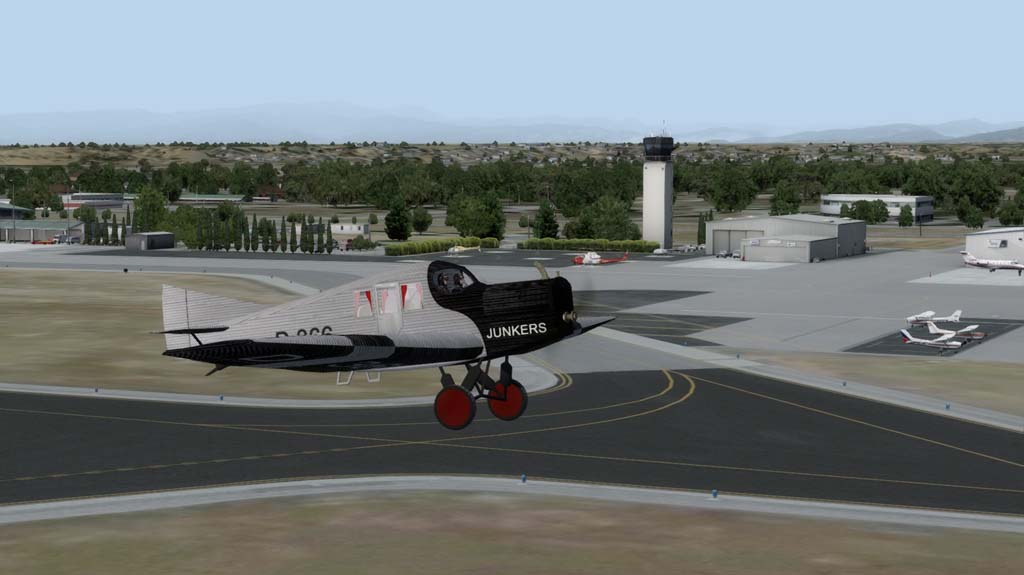
Climbing out of Redding California
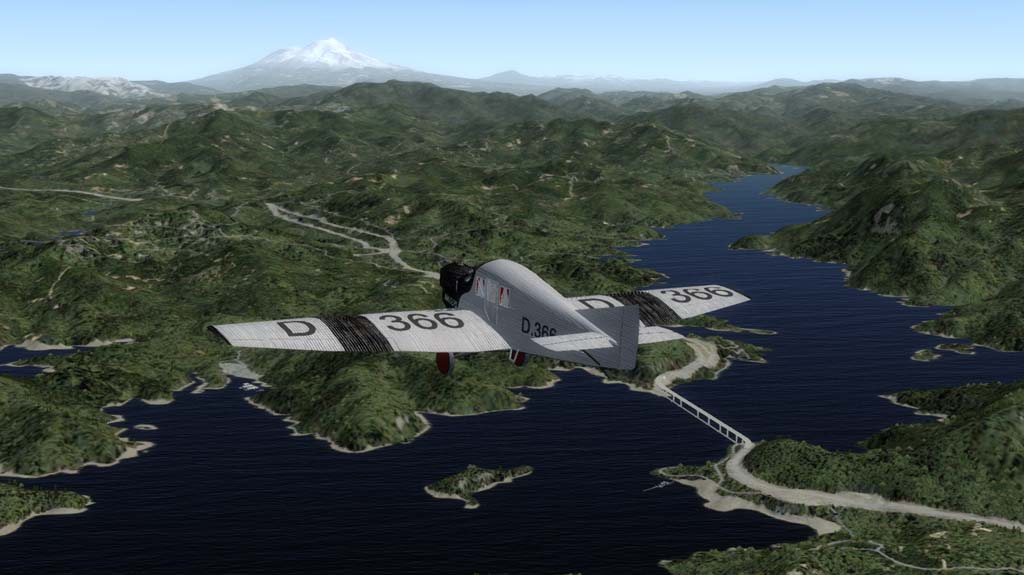
Heading on over the Mountains
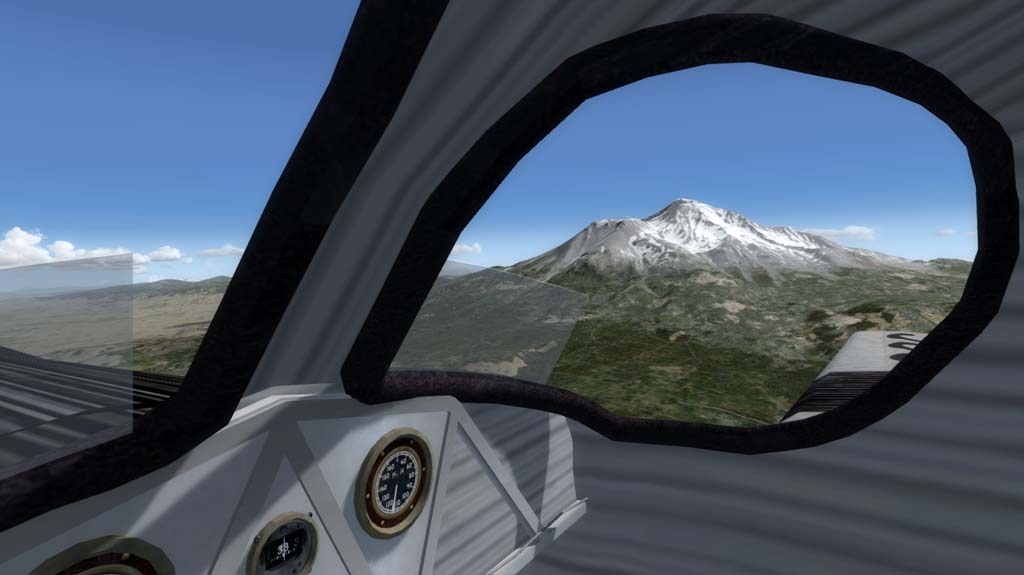
Mount Shasta from the cockpit, cold!
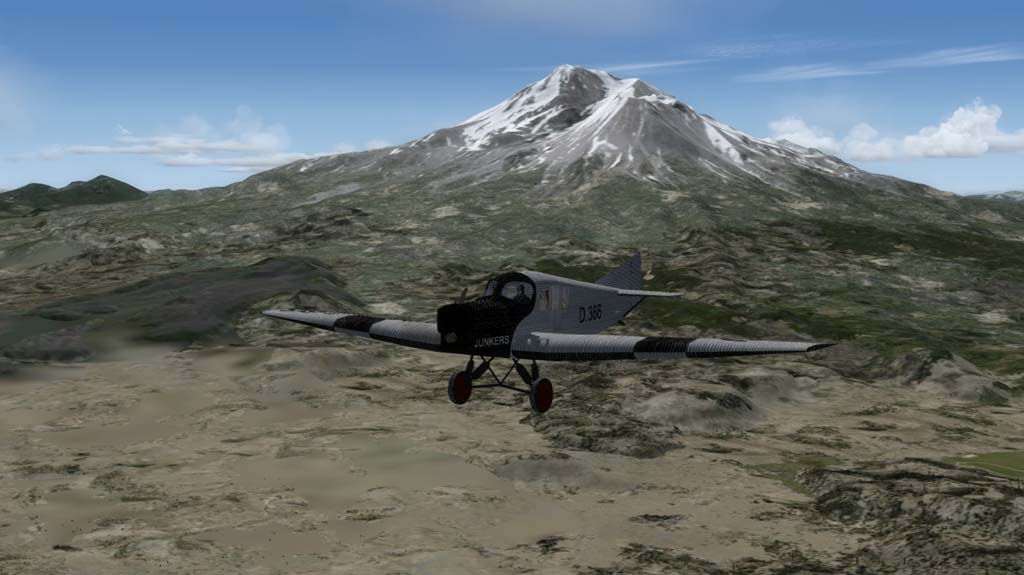
Flying past Mount Shasta
blanston12
SOH-CM-2025
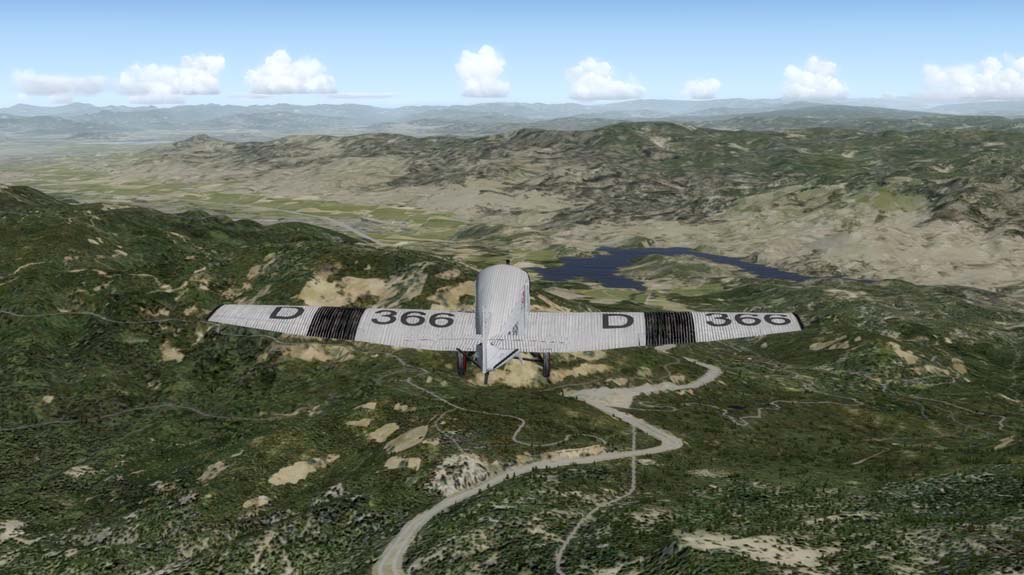
Southern Oregon.
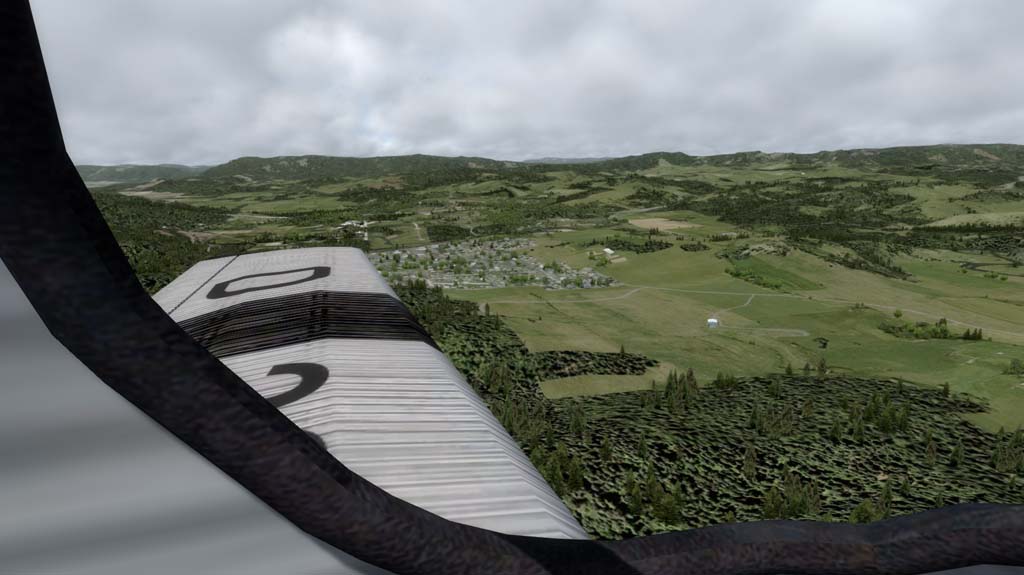
Finally under those clouds. Sorry I did not take more pics while i was in the clouds, but I was a bit preoccupied not crashing into a mountain.
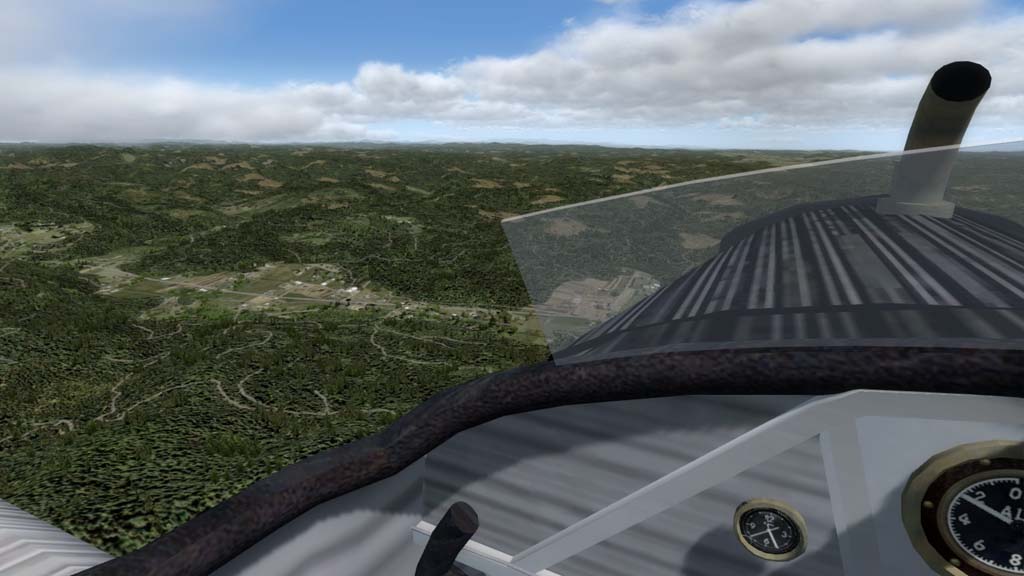
Finally the clouds are breaking up.
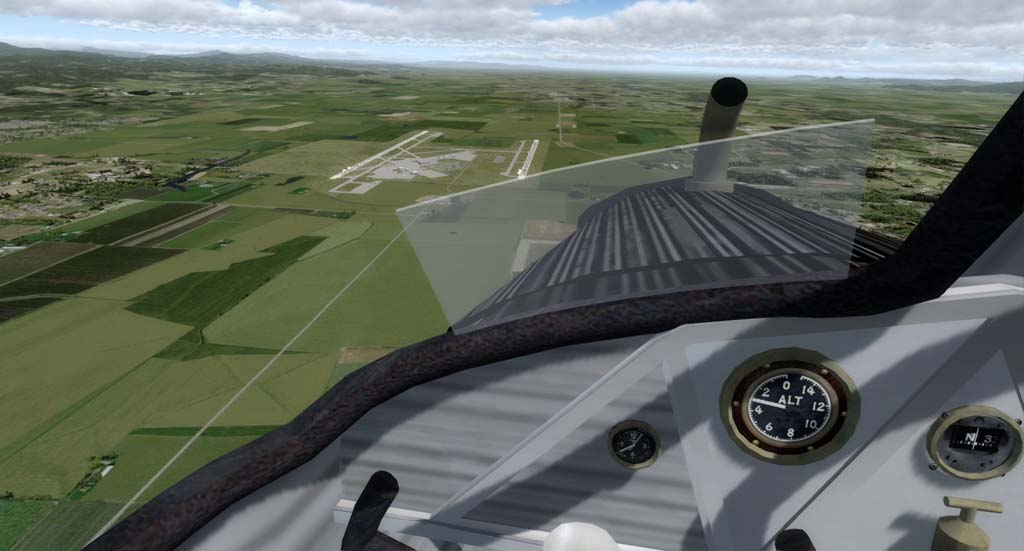
Eugene Airport, my destination.
blanston12
SOH-CM-2025
June 10, 2017. The aircraft for the next leg is the Fokker F.VIIa, by Jens B. Kristensen. The Fokker was the aircraft of choice for many early airlines, both in Europe and the Americas and it dominated the American market in the late 1920s.
My Progress has been delayed by the fact that I just received a new computer to use for flight sim and I need to transfer over and re-install enough software so I could get flying again. Today flying conditions are good, 7 kn winds, ceiling 2000-4000 feet with clear terrain between me and my destination of Pearson Field, Vancouver Washington, 93 nm away.

Ready for takeoff

Climbing out of Eugene Oregon.

Central Oregon.
blanston12
SOH-CM-2025

Clouds getting thicker.

Make sure you avoid the radio antennas.

My destination, I'm flying over KPDX but my destination is just beyond the river.

Arrived at Pearson Field.
blanston12
SOH-CM-2025
June 10, 2017: This afternoon I got ready the de Havilland DH.60 Moth by Golden Age Simulations, which I like a lot. The DH.60 was a two seat training and touring aircraft built from 1925 in many different versions until 1932 when it was replaced by the DH.82 Tiger Moth. “By 1929 it was estimated that of every 100 aeroplanes in Britain, 85 were Moths of one type or another”.
My 114nm flight to Seattles Renton Municipal Airport was pretty smooth, most interesting thing was this was the first real flight I did on the new computer using P3D V4, with autogen turned up to the max and the screen at 3840x2160 I was still getting 60 fps, hopefully you will see a difference in the screen shots.
So far I have had 12.1 hours of flight time compared to 13.5 by the flyers, and they arrived in Seattle after 4 days while I took 16, but I won’t have to take 3 weeks getting my aircraft ready for the next leg.
Here are the pics:

Ready for takeoff

Last look at Oregon for a while

Central Washington

Mount St Helens, hiding in the clouds.
blanston12
SOH-CM-2025

[FONT=Tahoma, Calibri, Verdana, Geneva, sans-serif]I can't tell you how many times I flew under this bridge in FS2004.[/FONT]

SeaTac Airport with Seattle in the distance.

My destination, Renton Municipal Airport.

Aircraft Secured, time for dinner!
blanston12
SOH-CM-2025
April 6, 1924: The preparations had been made and the flyers were ready to start their flight. The route had been organized into seven divisions for planning purposes and the first division was from Seattle to Attu in the Aleutian islands. The pilots had been instructed to name there planes after American cities on the four points of the compass, Major Martin named his plane ‘Seattle’, Lt. Smith named his plane ‘Chicago’, Lt Wade named his ‘Boston’ and Lt Nelson chose ‘New Orleans’. Sgt. Turner became ill just before departure and felt to weak to continue so Lt Smith chose alternate pilot Lt Leslie Arnold to be his co-pilot/mechanic. They wanted to depart on April 4th but bad weather reports caused them to cancel. On April 5th Major Martin tried to take off but his propeller broke with a loud crack and repairs took till the next day. Finally on the 6th, in front large crowds, the four planes taxied out and one by one took off. The planes were at maximum weight and Boston could not get airborne. Lt Wade taxied back to the dock, where they made some adjustments and unloaded some gear including their rifle, a small anchor and some extra clothing. An hour behind the others they took off and were on there way to Prince Rupert Canada, 650 miles away.
June 11, 2017: The flyers took about 8 hours to fly from Seattle to Prince Rupert, not having that much time today I decided to break the trip into three smaller legs. Since they had switched there planes from wheels to floats, I will use float planes on these first legs. The aircraft I have chosen is the Ryan B-5 Brougham by Golden Age Simulations. The Brougham was a very popular small airliner that was used in Alaska but also China and Central America. The model is very good, flying it is easy but side visibility is a bit restricted, but thats the way it was built. My destination for today is Comox, British Columbia, on the eastern coast of Victoria Island, 170 nm away. Flying conditions are again good, scattered clouds and 5-6 kn. winds, the flight was uneventful and I arrived after 1.7 hours of flying. Here are a few pictures from the flight:

Ready for takeoff.

Climbing out of Renton Municipal Airport.

Flying over Downtown Seattle

View along the way.
blanston12
SOH-CM-2025

Another along the way.

Yet another along the way.

The destination is in site.

Landing at Comox
PS. Sorry for waiting so long to post this, its been a busy week.
blanston12
SOH-CM-2025
June 15, 2017: Today I got ready the Monocoupe 90, a two seat cabin monoplane, which first flew in 1927. Various versions were in production until the late 1940's, and over 300 were built. The version I am using today was made by Golden Age Simulations and is very good, the package includes the Monocoupe 90, 110 and 125 and has both wheeled and float versions.
I readied for flight the float plane version of of the 90 in a nice blue color. I had tried this flight two days before but the sim crashed so to make up time I did resort to some time acceleration. My plan today is to fly to Bella Bella, British Columbia, 191 nm away. Weather today is a bit more challenging than the previous flights, conditions in Comox were 14kn winds with cloud level at between 800-3000 feet. I headed north west following the Discovery Passage to the Johnstone strait, keeping between 1000-1500 feet to stay below the clouds, in the Johnstone strait the clouds got heavier and in I dropped to 800 ft and spent some time flying through rain. Once I reached the pacific things cleared up a bit, however once I reached the Burke Channel the clouds closed in again and I had to drop to about 500 feet to stay in clear air. I found the passage on the south side of Denny Island and followed it around to Bella Bella. The Monocoupe came in a bit fast and it took a few attempts to get the landing right. One problem with sea plane airports is its a bit harder to identify them, there are two of in this little bay and I ended up stopping next to the wrong one, but they are all pretty close together and as far as the FSAirlines client was concerned it was close enough and the flight got recorded. Flight time 1.9 hours. Here are a few screen shots from the flight:

Ready to depart.

Up the Discovery Passage

Down the Johnstone strait

Still flying down the Johnstone strait
blanston12
SOH-CM-2025

Over the Pacific

Getting Closer

Up the Burke Channel

Arrived.
blanston12
SOH-CM-2025
Bravo, Joe.
Loving your aircraft choice. I've been flying the Brougham and the Monocoupe float versions recently - around Prince of Wales Island.
Best wishes for your next leg!
Thanks Portia, your encouragement means a lot!
blanston12
SOH-CM-2025
June 17, 2017: Today I prepared the Waco UBF-2 for flight. The Waco F-Series first flew in 1930 and was a very popular sport and training aircraft. Many of this classic aircraft are still flying and versions the aircraft are still being built. The model I am using was made by Golden Age simulations and it is very nice to fly. I think it’s the fourth Golden Age aircraft I have used so far.
The weather was calm but hazy, visibility between 5 and 8 miles. I was always worried that the fog would roll in so I stayed low at around 1000ft but full fog never arrived. I few along the west coast of Princess Royal and Pitt island before arriving at Prince Rupert Harbor. The 155 nm flight from Bella Bella took 1.5 hours.

Ready for flight.

Hazy conditions.

Princess Royal Island.

Along the way.
blanston12
SOH-CM-2025

Flying between McCauley and Pitt Islands.

The town of Prince Rupert.

Nice view of the cruise ship.

Safe landing.
blanston12
SOH-CM-2025
June 19, 2017: Today from Prince Rupert I prepared the Fairey Swordfish for the flight. The Fairey Swordfish was a British torpedo bomber that first flew in 1934 and is probably the closest aircraft to the Douglas World Cruiser I am likely to use, unless of course someone decides to make a P3D/FSX compatible version of the DWC (please?). Despite being considered obsolete at the start of the WW2, it was still in service when the war ended. Produced until 1944, it sank more ships than any other allied aircraft and survived past several aircraft designed to replace it. The model I am using today is made by 'Flying Stations' and is quite nice.
It was cloudy in Prince Rupert so as I left I stayed low as I headed North west over the channel. After about an hour of flying the cloud lifted and I climbed to 6000 ft so I could head directly over the mountains rather than weaving my way through the many channels. Once I had flown over the lower peninsula of Baranof island I descended to 1500 feet and followed the along the coast to Sitka Alaska and landed after 2.3 hours of flying.
Here are a few pics from the flight.
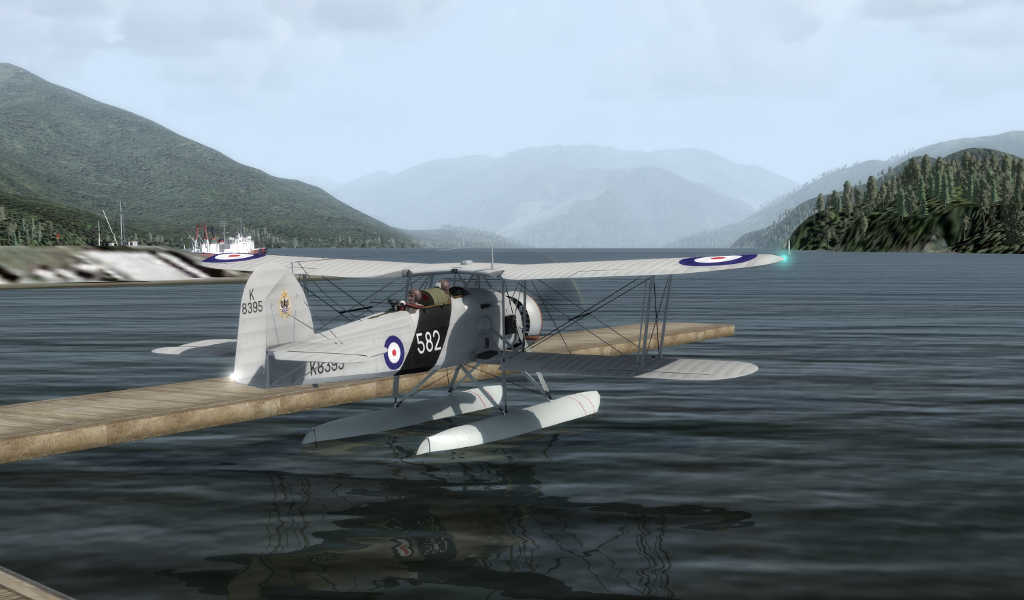
Prince Rupert, BC. Ready to go
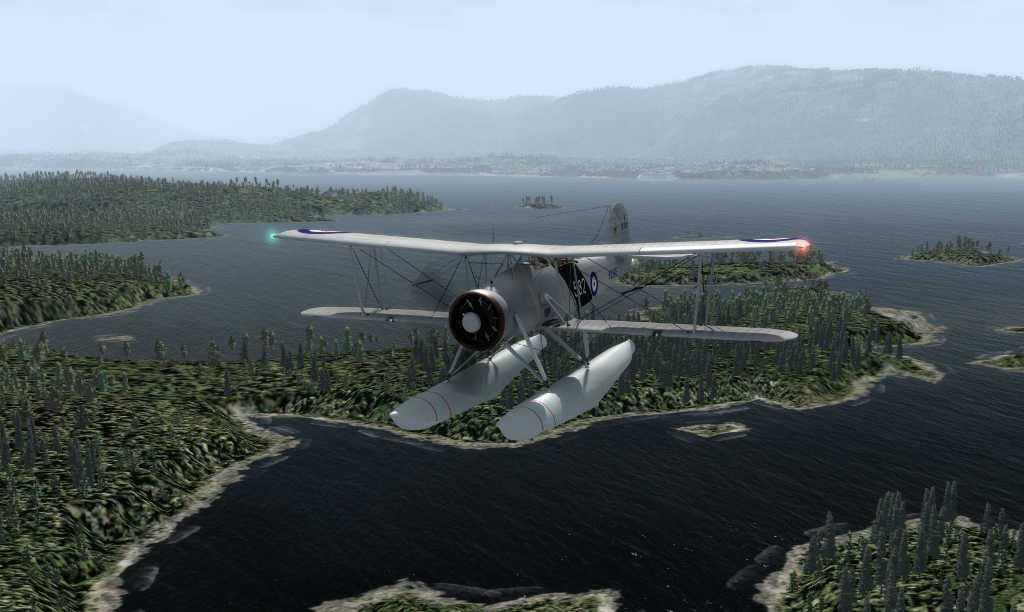
Climbing out of Prince Rupert, BC.
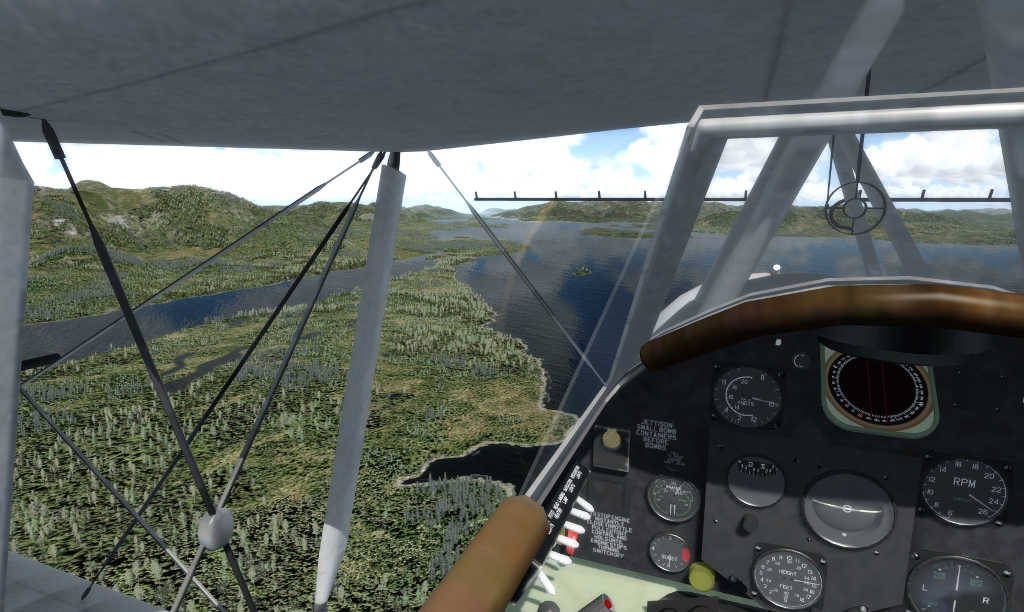
Turning toward Ketchikan Alaska

Flying over Ketchikan Alaska
blanston12
SOH-CM-2025

Ah! Good flying weather.
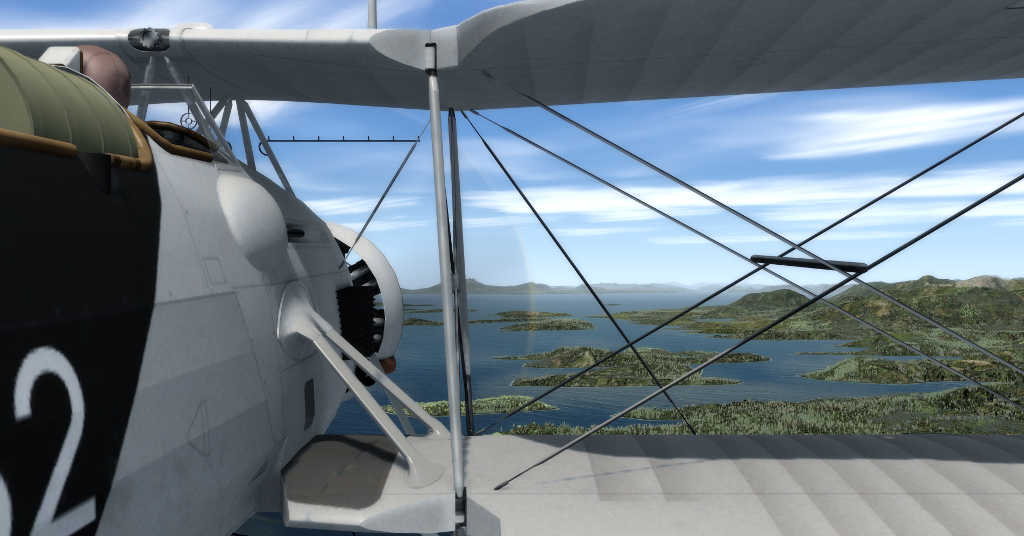
Flying along the coast of Baranof Island.
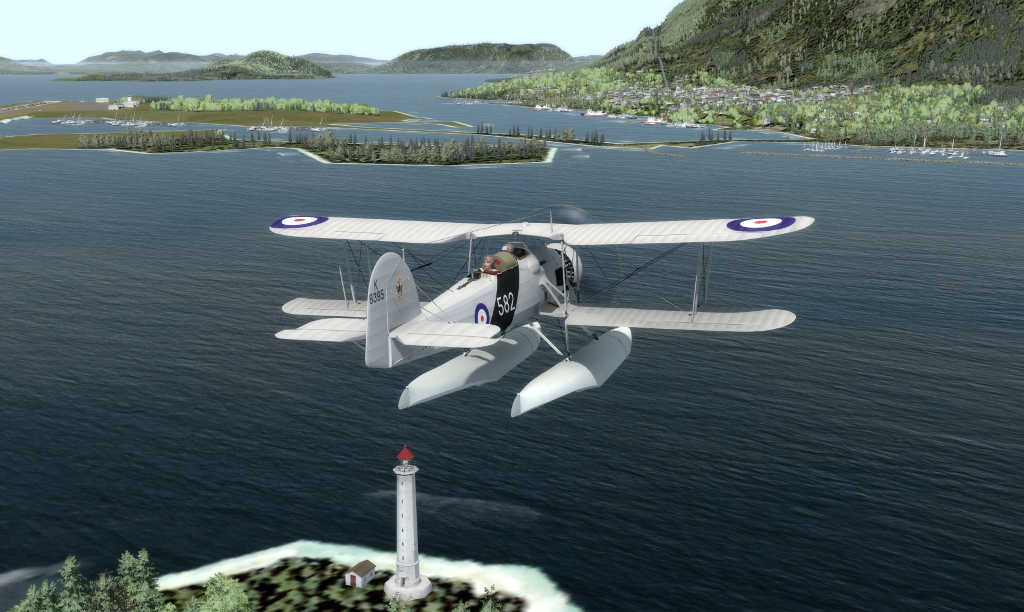
Coming into Sitka Alaska.
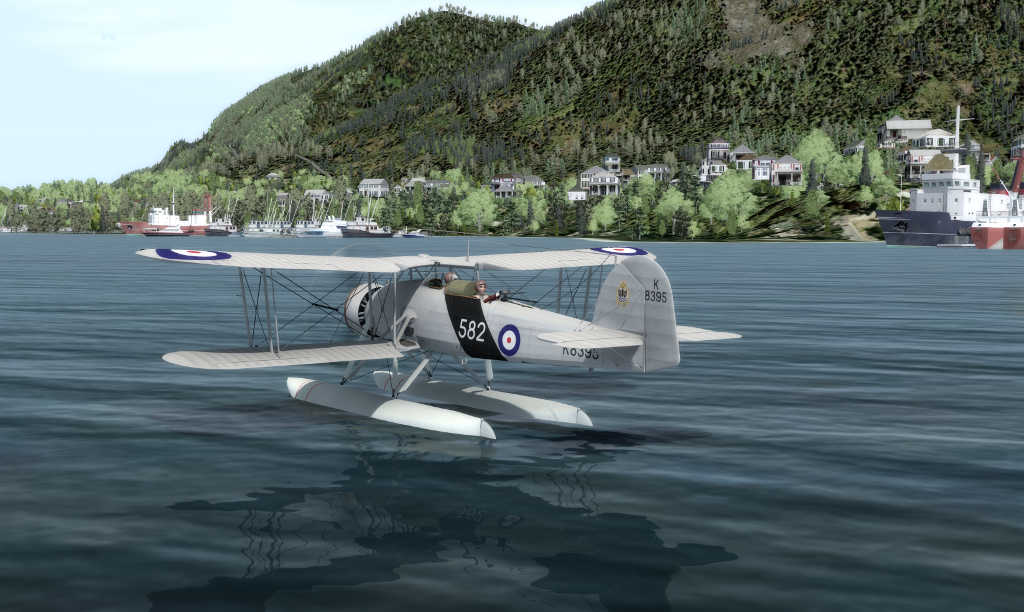
Landed Safe!
